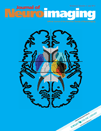Arterial Spin Labeling Identifies Tissue Salvage and Good Clinical Recovery After Acute Ischemic Stroke
J Neuroimaging 2013;23:391-396.
Conflict of Interest: None.
Abstract
ABSTRACT
OBJECTIVE
Arterial spin labeling (ASL) is a relatively new MR perfusion technique that requires validation.
METHODS
One hundred patients with an acute hemispheric ischemic stroke were imaged within 6 hours of symptom onset with perfusion CT (CTP), and at 24 hours with MRI perfusion imaging, including ASL and bolus dynamic susceptibility contrast (DSC) imaging. Baseline CTP was used to define tissue at risk. This was used to determine persistent hypoperfusion, or hyperperfusion, on 24-hour ASL maps.
RESULTS
Using 24 hour ASL, 48 of 100 patients showed hyperperfusion, and 41 showed persistent hypoperfusion. None of the PWI maps identified hyperperfusion. Compared to patients with persistent hypoperfusion on ASL, patients with hyperperfusion had less progression of acute CTP mismatch tissue to infarction at 24 hours (P= .05). ASL hyperperfusion was also associated with improved early clinical improvement: mean reduction in acute to 24 hour National Institutes of Health Stroke Scale = 12 versus 4 for ASL hypoperfusion group (P= .05), as well as 90 day modified Rankin Score (mean 2 vs. 4 for hypoperfusion group, P= .01).
DISCUSSION
Hyperperfusion of the initially ischemic area identified on ASL at 24 hours poststroke identifies patients with better tissue and clinical outcomes.




